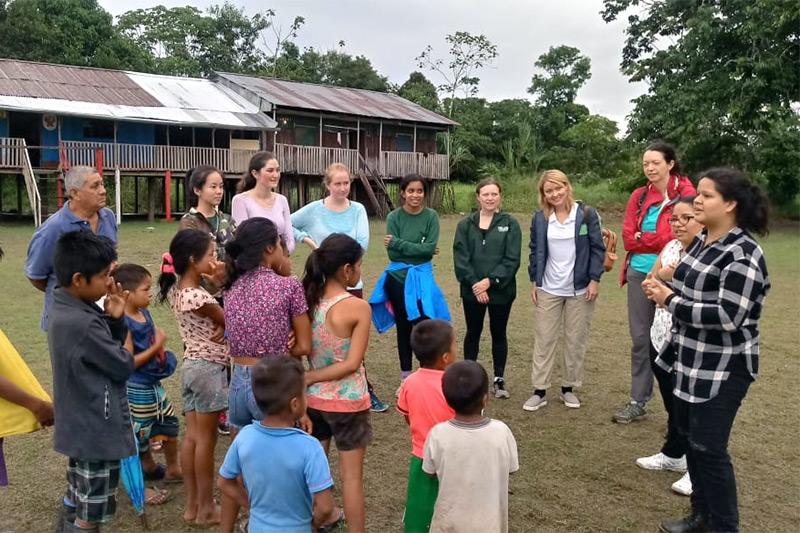Lessons from Peru
They delighted in everything Peru had to offer, from fishing on the Amazon to bird-watching in the rainforest to surfing on the Pacific. But this was anything but a vacation.
For Siyang Hu, Claire Sentilles, Shreya Gunda, Rachel Russell and Ellie Pepperell, seniors in biomedical engineering at Tulane University, this was a trip with a mission. With much of Peru’s rural population living below the poverty line, they wanted to experience for themselves what life is like for the country’s poorest people, particularly when it comes to health care.
The students then drew from that experience for their team design project, a yearlong endeavor culminating with an invention that addresses healthcare needs and, in the long run, impacts global health.
"We were gratified to be able to provide this amazing opportunity to the students. It allowed them to deepen their knowledge and confidence in the biomedical engineering design process."
Assistant professor Carolyn Bayer
“You have to go beyond reading an article or doing research on your laptop to find out what the real needs are,” said Pepperell, a native of Austin, Texas. “And that’s exactly what we did.”
With their advisers, Katherine Raymond, a professor of practice, and Carolyn Bayer, an assistant professor, the students chose Peru as the focus of their project because of Tulane’s strong connections to the South American country. Associate professor Valerie Paz-Soldan, director of the Tulane Health Offices for Latin America, is based in Lima, where she has mentored dozens of students conducting research.
“She was very enthusiastic for us to come down,” Bayer said. “She helped us make connections with Pontifical Catholic University of Peru, and the faculty there helped us organize the trip and plan the agenda.” Two Peruvian students joined the Tulane team.
Among other things, they traveled to some of the country’s most remote villages, where they were able to observe sick patients being transported by boat to the nearest health post, similar to a clinic but rarely staffed by physicians.
The students aren’t ready to share their ideas but say they revolve around issues of transportation, diagnostics and communications. They will spend the next several months working with their advisers to refine these ideas, begin the design process and produce a prototype. In April, they will present their finished product at the 2019 Engineering Design Expo.
“The goal was to do a design-needs assessment, which involved visiting clinics and hospitals and interacting with medical personnel and patients,” Sentilles said. “Empathy is the first step of human-centered design, so it was important for us to experience the issues firsthand.”

